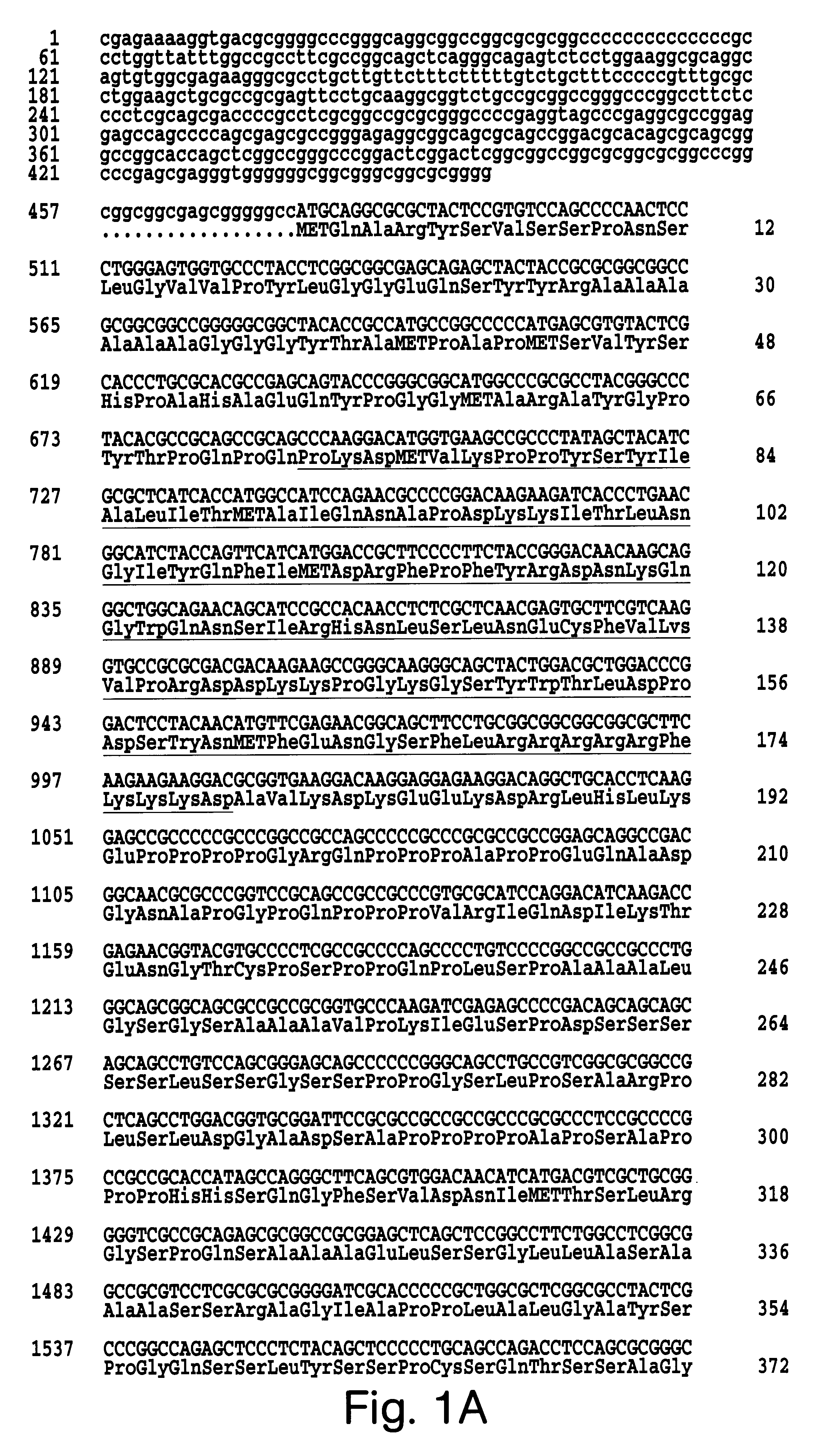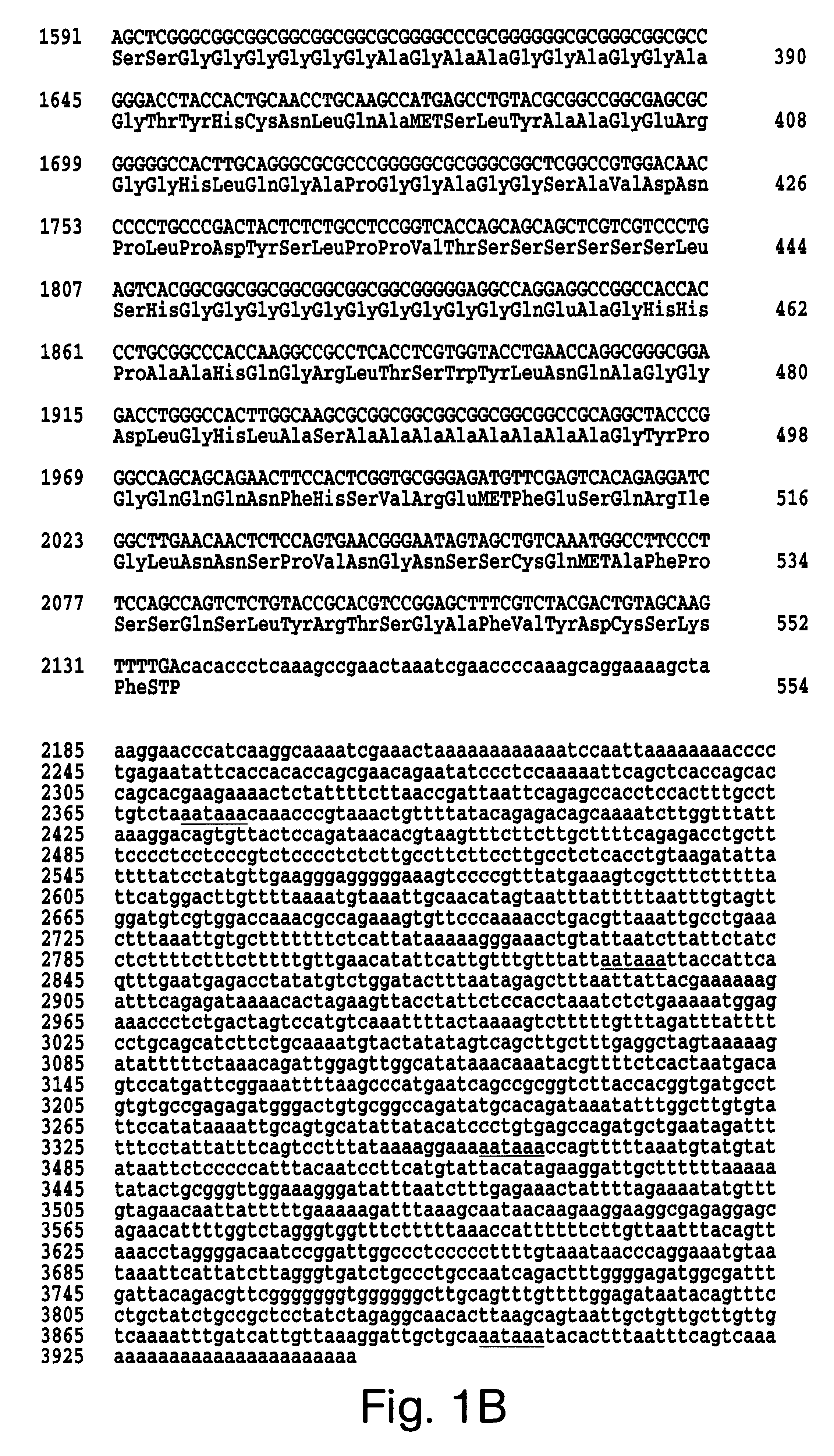Glaucoma therapeutics and diagnostics based on a novel human transcription factor
a human transcription factor and glaucoma therapy technology, applied in the field of glaucoma therapeutics and diagnostics based on a novel human transcription factor, can solve the problems of peripheral vision loss and sometimes loss of central vision, and achieve the effects of preventing or prolonging the onset of glaucoma, effective prescribing, and highest clinical benefi
- Summary
- Abstract
- Description
- Claims
- Application Information
AI Technical Summary
Benefits of technology
Problems solved by technology
Method used
Image
Examples
Embodiment Construction
4.1. General
The present invention is based, at least in part, on the discovery of a novel human gene, termed "hFKHL7", defects in which have been found to correlate with the existence of glaucoma in subjects. hFKHL7 maps to human chromosome 6p25. The FKHL7 protein is a monomeric DNA binding protein that shares a core binding site (RTAAYA) with four other FKHL7-like proteins. The human FKHL7 coding sequence is 1.7 kb in size and contains no introns. The 1659 bp open reading frame (SEQ ID NO. 3) encodes a 553 amino acid polypeptide (SEQ ID NO. 2). The first in-frame ATG was found to match well with the Kozak consensus sequence (Kozak, M. Mamm. Genome 7: 5630574 (1996) and Kozak, M. Annu. Rev. Cell. Biol. 8: 197-225 (1992)). The COOH-terminal domain contains several stretches of homopolymeric runs of alanine and glycine. The FKHL7 coding region contains 5 recognition sites for the restriction enzyme NotI. A BLASTN screen of the public dbEST database with the FKHL7 genomic sequence yiel...
PUM
| Property | Measurement | Unit |
|---|---|---|
| temperature | aaaaa | aaaaa |
| temperature | aaaaa | aaaaa |
| temperature | aaaaa | aaaaa |
Abstract
Description
Claims
Application Information
 Login to View More
Login to View More - R&D
- Intellectual Property
- Life Sciences
- Materials
- Tech Scout
- Unparalleled Data Quality
- Higher Quality Content
- 60% Fewer Hallucinations
Browse by: Latest US Patents, China's latest patents, Technical Efficacy Thesaurus, Application Domain, Technology Topic, Popular Technical Reports.
© 2025 PatSnap. All rights reserved.Legal|Privacy policy|Modern Slavery Act Transparency Statement|Sitemap|About US| Contact US: help@patsnap.com



